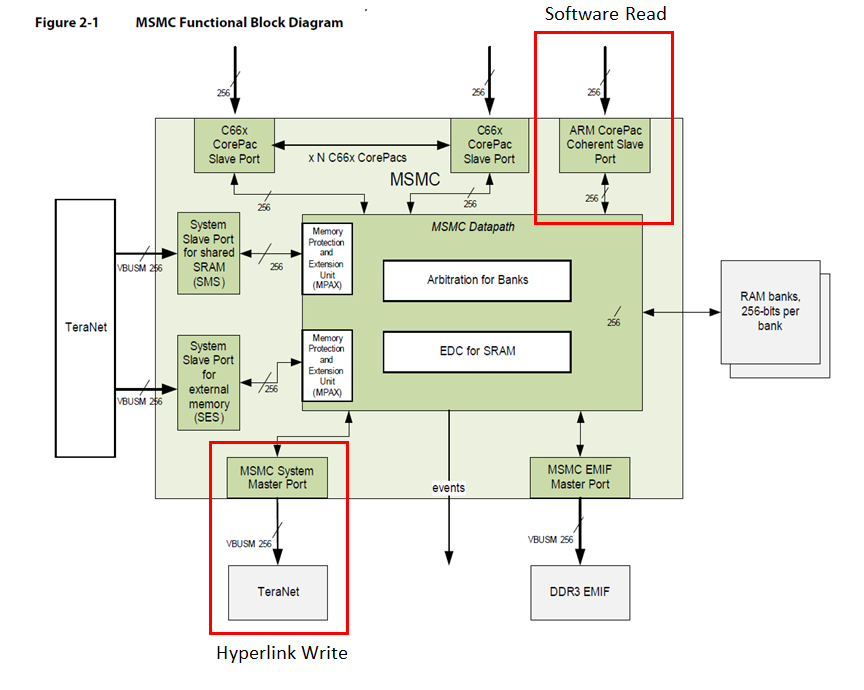I was able to make the Hyperlink Memory mapped example work between two 66AK2E05 on the A15 side. I am concerned about the concurrency topic now. I have seen almost nothing on the forum.
How can I safely lock access to the databuffer when reading/writing through Hyperlink?
My use case is the following: one 66AK2E05 is writing remotely a smalll set of integers (less than 10) to the other 66Ak2E05 through Hyperlink. On the other side, the 66AK2E05 is just reading the incoming data.
As basis, I am using the CPU block transfer from the memory mapped example of the MCSDK.
As fas as I know, I can use the 2 following solutions:
- hyperlink interrupt packet
- hardware semaphore
In order to be exhaustive, I want to know if there are other possibilities and what would be the most efficient way? For example:
- Since it is a CPU block transfer, can I use the data buffer as an atomic structure? Can I assume that there won't be any conccurrent read and write?
- Is polling on an Hyperlink register to know if there is a pending transfer possible (any flow control register?) ?


